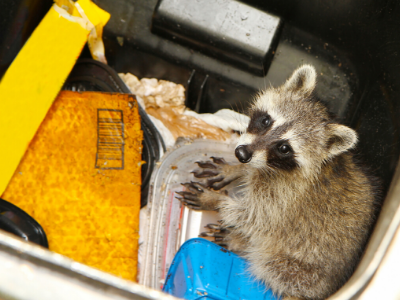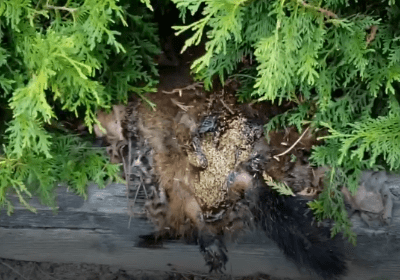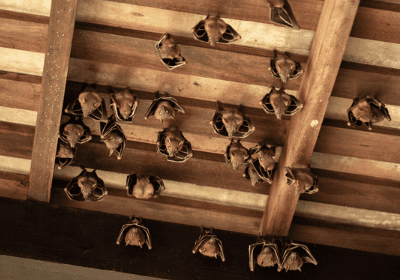Raccoon breeding season is upon us here in Ontario. Shortly following, we will be in raccoon birthing season. While we are seeking shelter from the cold temps and adding an extra layer of socks, raccoons have begun the process of looking for a safe warm place to birth and rear their young kits. Your home or business is the perfect nursery for soon to be raccoon mothers.
Raccoons are giving birth to litters of up to 7 babies from February through May. These animals make wonderful mothers by ensuring their litters have a safe place to grow. Unfortunately, they also make a point to teach them all the tricks to break into future homes.
Aside from the noise and damaged caused by a raccoon nursery, raccoon feces is a huge problem. These critters prefer to dedicate one area to repeatedly use as a bathroom. We regularly see clients paying for soiled insulation to be removed from their attics or cleaning of sheds and patios.
Raccoons are the “perfect pest” when it comes to breaking and entering. These intelligent and strong-willed animals are capable of climbing brick walls to get into buildings. Over time, raccoons have also adapted to learn how to take advantage of the construction of our homes and businesses. With all the abilities raccoons possess, we thought it would be a great topic for us to blog about, so the following is a list of the top 5 places raccoons will break into homes.
Number 1: Roof Soffit Intersections.
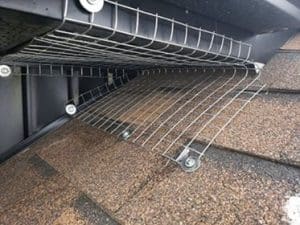 The most common area on our list is the intersections of roof soffits. We estimate that 60% of our raccoon removal services involve entry through this section of the roof system. A roof soffit intersection is the portion of the roof where aluminum soffit ends and meets the shingles, forming an angle. Dormers (where two different roof levels meet) are a great example of a roof soffit intersection. These intersections are extremely weak areas of a roof system, making it easy for raccoons to push up or rip out the aluminum panels to access the attic. Because of this design flaw, any new or old home is easy pickings for raccoons looking for some shelter.
The most common area on our list is the intersections of roof soffits. We estimate that 60% of our raccoon removal services involve entry through this section of the roof system. A roof soffit intersection is the portion of the roof where aluminum soffit ends and meets the shingles, forming an angle. Dormers (where two different roof levels meet) are a great example of a roof soffit intersection. These intersections are extremely weak areas of a roof system, making it easy for raccoons to push up or rip out the aluminum panels to access the attic. Because of this design flaw, any new or old home is easy pickings for raccoons looking for some shelter.
Number 2: Roof Vents
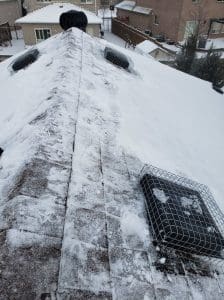 Roof vents are usually square-shaped, plastic or metal vents on a roof. These allow airflow to attics in order to prevent mold or moisture buildup. Most shingled roof systems have multiple roof vents, which means many access points to an attic. Beneath a roof vent is a square piece of plywood placed there by the home builder, which emits warm air. Once this warm air piques the interest of a nesting raccoon, they will rip the roof vent up or chew it apart to gain entry into a building. When the vent cap has been successfully removed they can now go in and out of attics at their leisure. This is an entry point that is unbiased and can affect new or old homes.
Roof vents are usually square-shaped, plastic or metal vents on a roof. These allow airflow to attics in order to prevent mold or moisture buildup. Most shingled roof systems have multiple roof vents, which means many access points to an attic. Beneath a roof vent is a square piece of plywood placed there by the home builder, which emits warm air. Once this warm air piques the interest of a nesting raccoon, they will rip the roof vent up or chew it apart to gain entry into a building. When the vent cap has been successfully removed they can now go in and out of attics at their leisure. This is an entry point that is unbiased and can affect new or old homes.
Number 3: Chimneys
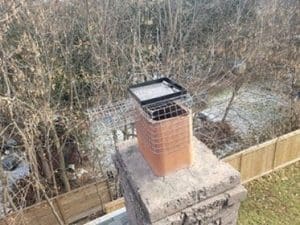 Unlike our two most common entry points, chimneys are mainly a raccoon entry point on older homes. Many aged residences include a fireplace that offers a hollow cavity for a raccoon to scale up and down to seek refuge. At the base of the chimney is a hollow void where many female raccoons like to have their babies. Fireplaces include a damper inside that opens and closes to allow smoke to rise up and out of the chimney. When a damper is left open, it allows raccoons to easily enter into your living space. The standard “birdhouse” style chimney cap is simply not made of a strong enough steel mesh to withstand the prying power of a raccoon’s hands.
Unlike our two most common entry points, chimneys are mainly a raccoon entry point on older homes. Many aged residences include a fireplace that offers a hollow cavity for a raccoon to scale up and down to seek refuge. At the base of the chimney is a hollow void where many female raccoons like to have their babies. Fireplaces include a damper inside that opens and closes to allow smoke to rise up and out of the chimney. When a damper is left open, it allows raccoons to easily enter into your living space. The standard “birdhouse” style chimney cap is simply not made of a strong enough steel mesh to withstand the prying power of a raccoon’s hands.
Number 4: Plumbing Flanges
 Plumbing flanges are the part of a home’s plumbing system which allows ventilation of gas through the roof. Plumbing flanges are a black pipe with a plastic mat to cover the hole in the roof that said pipe feeds through. The plastic make-up of these pipes allows raccoons to easily peel up or chew off to gain entry into attics. The damage caused by a single raccoon can result in expensive water damage to the inside of buildings.
Plumbing flanges are the part of a home’s plumbing system which allows ventilation of gas through the roof. Plumbing flanges are a black pipe with a plastic mat to cover the hole in the roof that said pipe feeds through. The plastic make-up of these pipes allows raccoons to easily peel up or chew off to gain entry into attics. The damage caused by a single raccoon can result in expensive water damage to the inside of buildings.
Number 5: Decks & Sheds
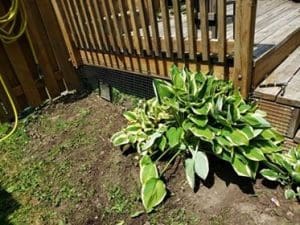 Decks and sheds are not directly attached to a building but these areas offer a great place for raccoons to seek refuge. Raccoons have a great ability to dig and most decks have plenty of openings for a raccoon to investigate. Window wells, lattice, or any soft soil area are a raccoons dream. Raccoons easily burrow under sheds and decks with there human-like hands and will live and raise a family there.
Decks and sheds are not directly attached to a building but these areas offer a great place for raccoons to seek refuge. Raccoons have a great ability to dig and most decks have plenty of openings for a raccoon to investigate. Window wells, lattice, or any soft soil area are a raccoons dream. Raccoons easily burrow under sheds and decks with there human-like hands and will live and raise a family there.
Although we have only listed 5 areas raccoons have adapted to use to gain entry into homes and businesses, these are not the only places they will utilize. The raccoon is very crafty and after 10 years of evicting raccoons, nothing surprises us. Pest Kings Wildlife & Pest Control offers various humane removal techniques and each one is specialized for individual scenarios. If you are experiencing a raccoon issue it is best to leave it in the hand of a trusted professional. Contact us today to find out how we can help!

